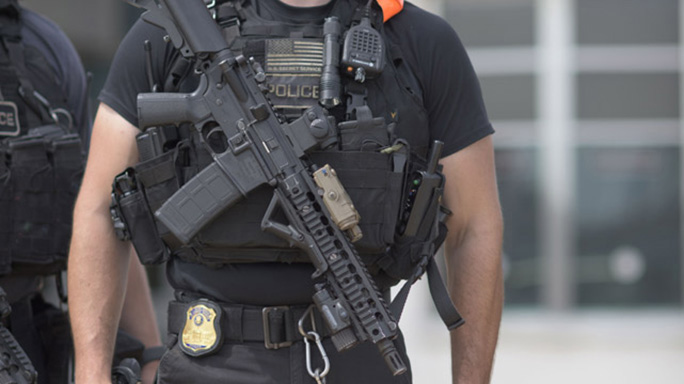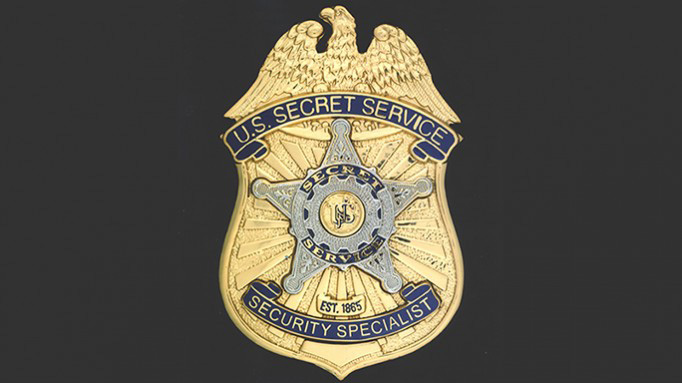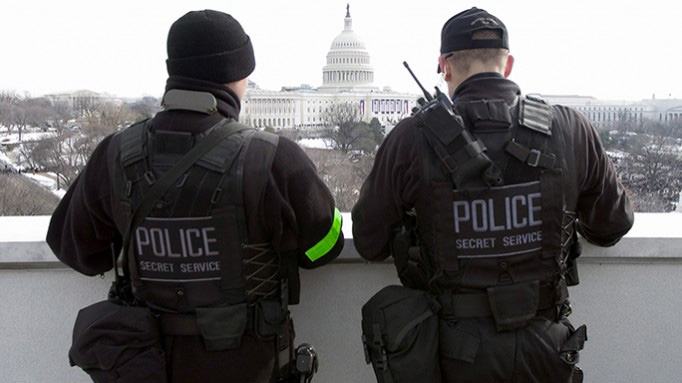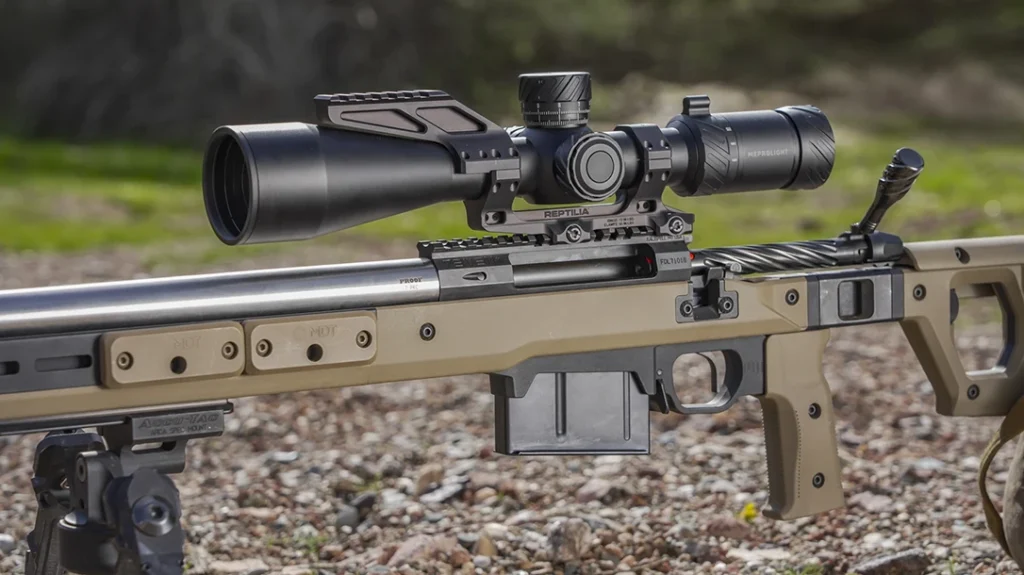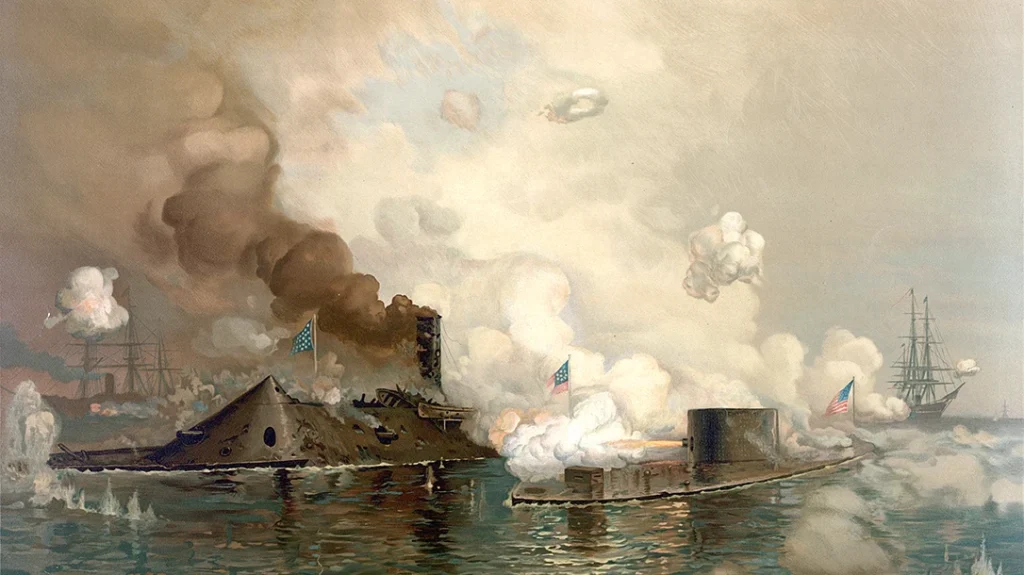Earlier this year, we told you the United States Secret Service had put out a brief pre-solicitation notice for a new 5.56x45mm rifle. Now it looks like the agency has issued a full request for proposal (RFP) containing way more information.
According to the RFP, the maximum lifetime quantity of the five-year IDIQ (Indefinite-Delivery, Indefinite-Quantity) contract is 3,900 rifles. The guaranteed minimum is 500 rifles, which will be fulfilled at the time of the contract award with an initial delivery order. The minimum order quantity is 25 rifles, while the maximum order is 1,000 rifles.
Interested parties are required to submit seven samples of their 5.56x45mm rifle. Each sample must be submitted with three Magpul magazines for a total of 21 magazines. Every sample is also required to come with a kit that includes all the replacement parts and special tools necessary to complete the manufacturer’s recommended maintenance up to 20,000 rounds. Each company is allowed to submit up to two rifle variants for evaluation. Testing will be done using Mechanix Wear “Vent” gloves.
Advertisement — Continue Reading Below
The deadline for questions is October 31, while the deadline for responses is submissions is December 1.
Evaluation Factors
The RFP says the winner of the contract will be decided based on the proposal that is determined to be the “most beneficial to the Government,” using trade-offs, with “appropriate consideration” given to these four evaluation factors: Technical, Testing, Past Performance, and Price. The first three factors combined are more important than price. Manufacturers are also warned that the award may not be necessarily given to the lowest price offered or the highest rated submission.
- RELATED STORY: The US Secret Service Celebrates 150 Years of Service
The submitted rifles will be evaluated using what the RFP calls a “three-phased approach” that tests the rifles for compliance with the spec requirements listed below and “compatibility with the United States Secret Service’s protective and investigative missions.” Here’s how the phases are broken down when it comes to the Technical and Testing evaluation factors, via the RFP:
Advertisement — Continue Reading Below
Phase One (Pass/Fail)
- Technical Volume: The offeror’s technical volume will be inspected for compliance with the Instructions to Offerors and Statement of Work. (Pass/Fail)
- Armory Level Inspection: The offeror’s submitted variant samples will each be inspected for compliance with the Statement of Work. (Pass/Fail)
- Trigger Pull Test (Pass/Fail)
*The seven (7) samples will be randomly sorted into four groupings. (Exemplar, Sample Set A (3 samples), Sample Set B (1 sample), Sample Set C (2 samples))
- Velocity Test – Sample Set A (Pass/Fail)
- Accuracy Test – Sample Set A (Pass/Fail)
- Rate of Fire Test – Sample Set A (Pass/Fail)
- Rifle Drop Test – Sample Set B (Pass/Fail)
- Firing Safety Inspection, Component Check, & Function Fire – Sample Set B (Pass/Fail)
- Armorer Repair and Maintenance Evaluation (Pass/Fail)
Phase Two: User Evaluation
Advertisement — Continue Reading Below
- Basic User Live Fire Assessment
- Special Operations Division User Live Fire Assessment
- * Top 3 Ranked Variants will continue to Phase 3
Phase Three: Reliability and Endurance Testing – Sample Set A
- Barrel Life Test (min. 20,000 rounds) (Pass/Fail)
- Trigger Pull Test (Pass/Fail)
- Velocity Test (Pass/Fail)
- Accuracy Test (Pass/Fail)
- Visual/Mechanical Function Test (Pass/Fail)
- * All weapon malfunctions will be recorded and inspected by USSS Armorers.
- Only weapon-caused malfunctions will be used in the evaluation.
- Past Performance
- Price Volume
When it comes to past performance, the manufacturer must submit two recent—within three years of the deadline for the proposal submission—past performance references. The government will look at past performance in “timely delivery of services, technical quality” and “business-like concern for the interests of the customer,” the RFP says.
Secret Service Rifle Requirements
Here’s the breakdown of the Secret Service’s requirements for the 5.56x45mm rifle, via the RFP:
Advertisement — Continue Reading Below
The weapon shall be operable, without modification or alteration, by a right or left-handed user, firing with the right or left hand, depending on handedness.
All external metal parts of the weapon shall have a dark subdued, rust/corrosion resistant finish. The finish shall be unaffected by commercially available gun cleaning solvents, such as Simple Green, used in heated ultrasonic cleaning tanks. Flaking, peeling, blotching, etc. of the finish is unacceptable.
The weapon shall be chambered in accordance with current U.S. Military specifications for 5.56 x 45mm, and function with assorted ammunition ranging in weight from 55 to 77 grains (to include all common SAAMI-spec and Mil-Spec ammunition) as well as frangible ammunition.
Advertisement — Continue Reading Below
Dimensional Requirements
Height (no taller than, sights folded, w/o accessories or magazine) – 8.5 inches 2.9.4.2 Weight (no heavier than, w/o accessories) – 7.5 pounds
O/A Length (no longer than, w/stock fully extended) – 34 inches
Barrel length (min – max) – 10-12 inches
Rifling (5.56) – 1 turn 7” inch twist RHOperating System
Advertisement — Continue Reading Below
The weapon shall utilize a direct-impingement gas-operated system or a short-stroke gas piston system.
Barrel
The barrel shall have a minimum service life of 20,000 rounds. Barrel service life is defined as a not exceeding 5 Minutes-of-Angle (MOA) and exhibiting no more than 125 ft/sec decrease in velocity (in accordance with USSS velocity testing procedures), with observance of offeror’s submitted maintenance protocols.
Advertisement — Continue Reading Below
The barrel shall be free of cracks, seams, and other injurious defects and the bore and chamber shall be free of pockets, rings, bulges, and other deformations. The bore and chamber shall be chromium plated, or of equivalent corrosion resistance. Any coating in the chamber and bore shall be free of nodules, flaking, pits, stripping, anode burrs and evidence of etched base steel. Burrs and sharp edges shall be removed from the chamber edges, and bolt locking lugs.
The muzzle of the barrel shallbear a thread size of 1⁄2” x 28 tpi, with shoulder geometry of 90.
The muzzle shallbe equipped with a flash hider device, installed with shims as necessary. Crush washers are not acceptable.
Advertisement — Continue Reading Below
Mode of Fire
The weapon shall be selective fire, i.e. semi-automatic and full automatic. A “burst limiter” in the full-automatic mode is not acceptable.
Fire Selector
The fire control selector shall be ambidextrous in design, and be a single lever paddle mounted on the side of the receiver, adjacent to the rear pistol grip, thereby not requiring the shooter to significantly break their firing grip when actuating.
The fire control selector shall be a rotary type and shall have three positions; safe, semi-automatic and automatic and shall rotate manually without binding from one position to another when the hammer is cocked. The selector shall remain in place in each position by a perceptible spring detent load until manually reset.
With the hammer cocked, when the selector is placed in the “SAFE” position, it shall prevent the trigger from releasing the hammer so that the weapon is incapable of being fired.
When the selector is placed in the “SEMI AUTOMATIC” position, it shall have a disconnect, so that the weapon is capable of semi- automatic fire only (one shot with each pull of the trigger).
When the selector is placed in the “AUTO” position, the weapon shall be capable of automatic fire (continuous firing until the trigger is released or all cartridges are expended) at a rate of no less than 600, and no greater than 900, rounds-per-minute, while utilizing M193 ammunition.
Trigger
The trigger shall hold the hammer in the cocked position until the trigger is pulled. After partial or complete trigger pull, the trigger shall return to its normal forward positions (cocked and un-cocked) under spring action.
The trigger pull shall not measure less than 4.0 pounds, nor more than 6.5 pounds, regardless if the fire selector is set on semi or full-automatic fire.
The trigger configuration shall be two-stage with no adjustment screws or set screws.
The trigger shall have a smooth face, cannot be wider than the trigger guard, and shall be the only control inside the area enclosed by the trigger guard. Any other controls (bolt catch/release, magazine/catch release, etc.) inside the area enclosed by the trigger guard are not acceptable.
While utilizing gloves, the trigger shall not pinch the trigger finger between the trigger and the side of the receiver or between the trigger and the inside bottom of the trigger guard (see Note 1). Any design requiring the operator to manipulate/modify the trigger guard to meet this requirement is not acceptable.
Charging Handle
The charging handle shall be situated in the upper receiver. The charging handle shall not reciprocate with the bolt when the weapon is fired. The charging handle shall be capable of being operated with one hand while the shooters other hand is grasping the pistol grip or fore-end.
Bolt Hold-Open Device
The rifle shall be equipped with a magazine activated bolt hold open device. The bolt hold open device shall also be capable of being activated manually by the operator. When the bolt hold open device is activated by the magazine follower and the magazine is subsequently removed, the bolt shall remain in the rear or open position. When the bolt is in the rear or open position and a full magazine is inserted, the bolt shall remain in the rear or open position until the operator manually activates the bolt release. When the bolt catch is released, the bolt shall return to the battery position. Upon release, the bolt shall strip a round from the loaded magazine and load it into the chamber.
Magazine
The weapon magazine well shall be compatible with the standard NATO STANAG 30 round M16 series magazine (NSN 1005-01-561-7200) and the Magpul PMAG 30 AR/M4, 5.56×45 Magazine (NSN 1005-01-628-5106 and NSN 1005-01- 615-5169).
The magazine release shall securely retain the magazine in the magazine well. The magazine (whether empty or full) shall fall free from the magazine well once the magazine release button is activated without any further operator assistance. The magazine release button shall be spring loaded and the design of the receiver shall provide some shielding against inadvertent activation when placed against standard USSS uniform and/or body armor. The activation of the magazine release button shall be accomplished with minimum effort by the operator with only one hand.
The magazine should reliably feed all types of ammunition utilized in the USSS Evaluation and Testing protocols.
The magazine shall be capable of being inserted directly into the magazine well by the operator with one hand, and without any “rocking” type motion.
Lower Receiver
The lower receiver shall have a permanently affixed plate, label, or laser-etching, displaying a QR code or barcode, readable via commercially- available optical reader. This code shall be embedded with information specific to the host firearm, including (but not limited to) make, model/variant, and unique serial number.
Upper Receiver
The weapon shall be equipped with a Mil-Std-1913 Picatinny attachment rail on the top of the receiver for mounting of optics, iron sights, lasers, etc.
Forend/Handguard
The weapon shall have a modular free-floating handguard assembly measuring no less than 9.0 inches of functional/configurable railspace (measured along the 6:00 o’clock position of the rail).
The handguard assembly shall have the ability to attach Mil-Std-1913 Picatinny rail segment along the length of the handguard at the 3:00, 6:00 and 9:00 o’clock positions simultaneously. The contractor shall provide a sufficient quantity of rail segments to cover the length of the handguard at the 3:00, 6:00 and 9:00 o’clock positions simultaneously. Handguards with permanently attached Mil-Std 1913 Picatinny rails sections the length of the handguard at the 3:00, 6:00 and 9:00 o’clock positions shall also be considered.
When assembled to the weapon, the upper most rail of the free-floating handguard assembly shall align and be at the same height as the rail on the receiver. A one piece receiver/handguard assembly is acceptable as long as the barrel is free-floating, the above rail positioning interfaces are present, and handguard portion meets the minimum length requirement detailed in Section 2.9.15.
Pistol Grip
The rear pistol grip shall be securely attached to the lower portion of the receiver and shall not interfere with the operation of the selector lever. If applicable to the submission, vendor shall provide interchangeable rear pistol grip adapters (backstraps).
Butt-Stock
The butt stock shall be quickly adjustable for length of pull without the use of any tools. The butt stock shall have, at minimum total of four positions, including fully extended and fully collapsed.
Backup Sights
When utilized, the front/rear ‘backup’ sights shall be viewable through an Aimpoint Model T2 while mounted on a suitable optic-specific commercially available sight mount.
The front sight shall be a folding locking type, capable of being locked in both the up and down positions (lever lock, friction lock, spring detent, etc.). The front sight shall be located at the front of the weapon either on top of the gas block or at the end of the rail on the hand guard. The front sight shall be a post profile type, adjustable for elevation as part of operator zeroing procedures. The profile of the sighting portion of the post shall be .050 to .075 inches in thickness. At no time shall the sight unlock from its position as a result of firing the weapon.
The rear sight shall be a folding locking type, capable of being locked in both the up and down positions (lever lock, friction lock, spring detent etc.). The rear sight shall be an aperture type, adjustable for windage and elevation as part of operator zeroing procedures. At no time shall the sight unlock from its position as a result of firing the weapon.
Sling Mount
The weapon shall be supplied with means to mount a sling to, at minimum, the rear area of the receiver and the handguard, via quick-detach sling swivel. All sling mounting/attachment points will be required to be rotation-limited (4-position) quick-detach cups, to allow interface with quick-detach push button swivels.
